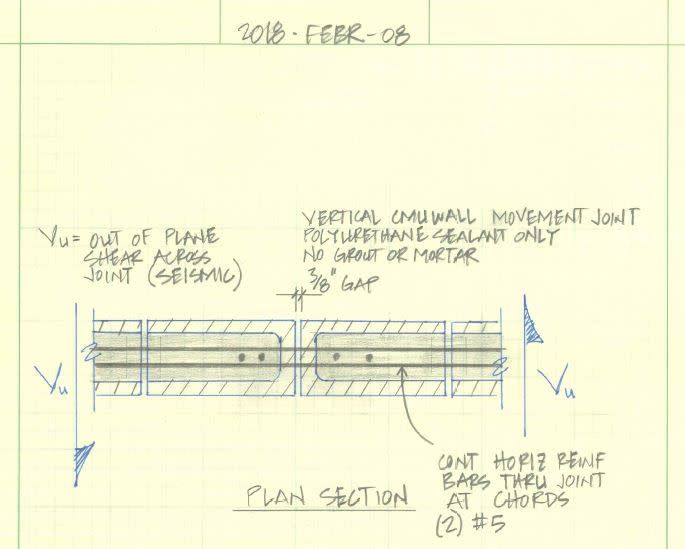I am looking for some guidance on how to determine the design shear strength for chord horizontal bars crossing an "open" 0.375 inch wide vertical control joint in an 7.625 inch wide fully grouted CMU wall.
The mechanism is similar to shear friction with smooth surfaces, except there is actually a gap, so no interface / interlock friction at all.
I don't think ACI 530-13 discusses shear friction at all, and ACI 318-14 has some brief language in the commentary.
Existing construction - redesign is not an option.
Primary demand at joint is out-of-plane seismic per ASCE 7-10 Section 12.11.
I'm guessing the governing limit states are
1) CMU shell crushing at the vertical faces, and
2) shear stress in horiz rebars, and
3) bending stresses in horiz rebars.
Any defensible code guidance, or rational extension from published codes? I practice in California.

The mechanism is similar to shear friction with smooth surfaces, except there is actually a gap, so no interface / interlock friction at all.
I don't think ACI 530-13 discusses shear friction at all, and ACI 318-14 has some brief language in the commentary.
Existing construction - redesign is not an option.
Primary demand at joint is out-of-plane seismic per ASCE 7-10 Section 12.11.
I'm guessing the governing limit states are
1) CMU shell crushing at the vertical faces, and
2) shear stress in horiz rebars, and
3) bending stresses in horiz rebars.
Any defensible code guidance, or rational extension from published codes? I practice in California.

